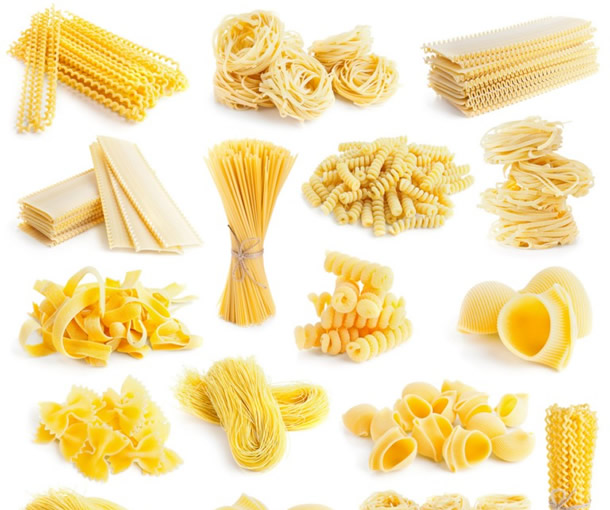Did you know that there is a pasta shape to complement every pasta dish out there? In Italy there are pretty strict rules about pasta and sauces. If you are a pasta connoisseur this might all come naturally to you but if not it can all seem a little confusing!
No one really knows how many different types of pasta there are in Italy. Some are unique to a particular region and are just ‘fatte in casa’ or homemade so can’t even be found in the local supermarkets. The names are often very entertaining and have a meaning – usually referring to the shape of the pasta. Combining a simple tomato sauce with ‘Priest stranglers’, ‘little ears’ or ‘little worms’ makes it so much more fun to eat!
Apart from making a pasta dish more interesting or more aesthetically pleasing to look at, the shape of pasta when complemented with a specific sauce can make a big difference to a recipe. it’s all to do with the relationship between texture of the pasta and the components of the sauce; the various shapes of the pasta were designed to best serve the needs of the sauce.
Here’s our quick guide to help you work out which sauces go best with which pasta shapes and types:
Long pastas such as tagliatelle, fettuccine, spaghetti, vermicelli, pappardelle, linguine..
These pair well with meat ragù, vegetable sauces including mushrooms, peppers, courgettes, aubergines, or artichokes; tomato sauces with oregano or basil; fish or seafood sauces including tuna, prawns, clams, mussels; white sauces including cheese sauces flavoured with spices, cream, ricotta; quick sauces such as truffle oils or shavings, garlic, oil and chilli, anchovies and capers, linguine go particularly well with pesto.
Long tube pastas such as bucatini or ziti.
We suggest vegetable sauces; tomato sauces with peppers, mushrooms, olives or capers. Bucatini all’amatriciana is a famous Roman dish combining bucatini with Guanciale (Italian salt cured pork), tomatoes, pecorino and black pepper.
Long fine pastas such as angel hair
A delicate pasta needs a light sauce, sauces with egg go well as do light cheese sauces such as ricotta or perhaps butter with sage.
Long egg pastas (fresh tagliatelle or fettuccine)
Great with ‘Hunter’ sauces such as hare, wild boar, pheasant and duck as well as delicate sauces with cream and either ham, peas, walnuts, pine nuts, almonds or truffles.
Short tubular pastas such as maccheroni, rigatoni, pennette, penne, lumache and pipette
These go well with thick and chunky sauces such as beef, chicken, sausage, with added fresh or dried mushrooms; vegetable sauces with mushrooms, peppers, artichokes, aubergines, asparagus; sauces with beans or chick peas; tomato sauces such as ‘arrabiata’. Ridged pastas provide even more texture for sauces to cling to. Thicker tube short pastas such as rigatoni and penne are ideal for ‘pasta al forno’ or oven baked pasta dishes.
Shaped pastas such as fusilli, conchiglie
These pair well with all kind of sauces but especially those with texture. Pieces of meat, vegetable or bean are captured in the crevices and twists of the pasta.
Flat pastas including lasagna and farfalle
We suggest creamy sauces including cream and parmesan, cream and salmon; vegetable and cheese sauces with ricotta, gorgonzola, spinach, asparagus; béchamel sauces; sauces made from blended vegetables such as pumpkin, mushrooms or spinach; sauces with porcini mushrooms.
Short or small pastas such as ditalini, mista corta, pipette, stelline
Great with sauces with beans and pulses, peas or chick peas; excellent in soups.
So we hope that this mini guide helps you on the road to some harmonious pasta shapes and sauce pairings! It’s a case of experimenting and seeing how the different combinations work. If the pasta reaches your mouth but the sauce stays in the bowl, the chances are the marriage just isn’t right. Let us know your perfect matches!


